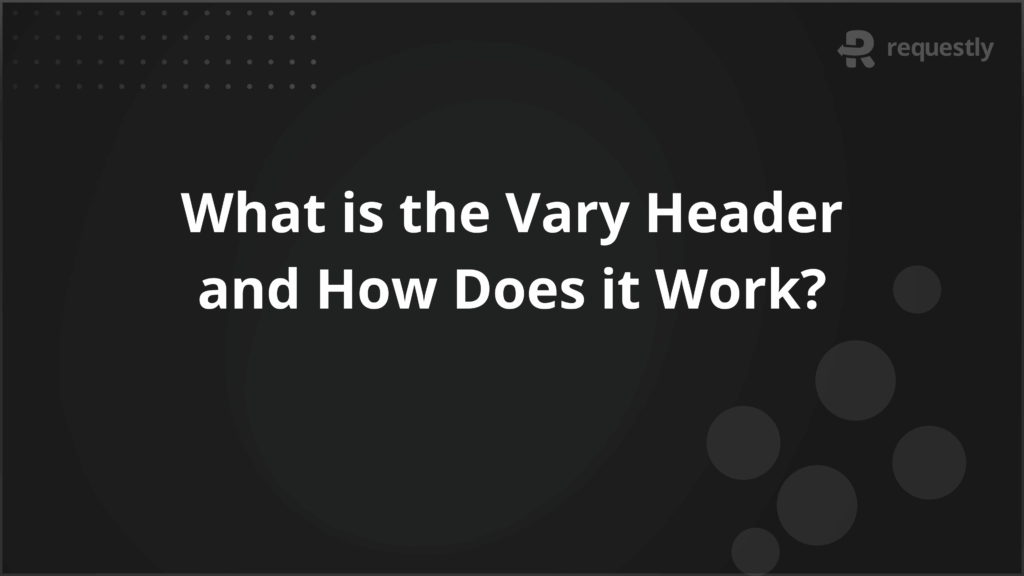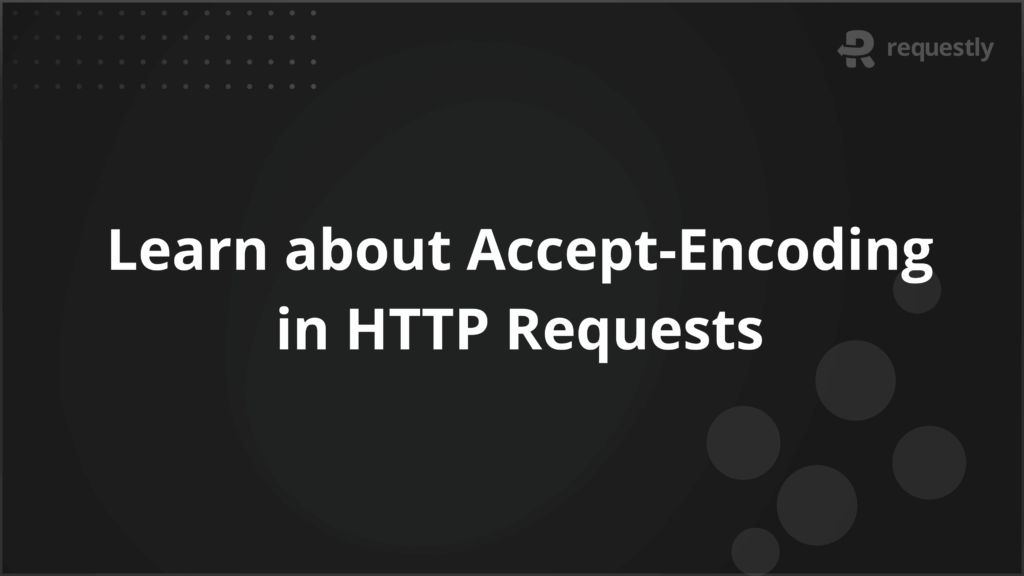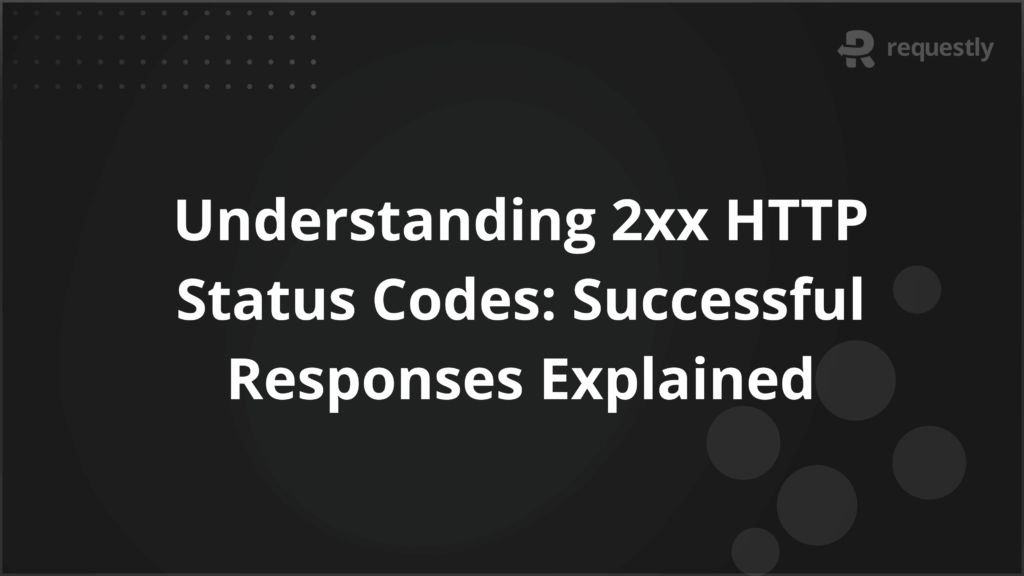What is the Vary Header and How Does it Work?

The Vary header is an HTTP response header that tells caches which request headers affect the response. It ensures that different versions of a resource are…

The Vary header is an HTTP response header that tells caches which request headers affect the response. It ensures that different versions of a resource are stored and served correctly. Without it, cached content may be delivered incorrectly, causing inconsistencies for users.
The Vary header is used when responses vary based on factors like language, device type, or user preferences. By specifying the relevant request headers, the Vary header helps CDNs, reverse proxies, and browsers serve the right version of a resource.
This article explains the Vary header, its impact on caching, best use cases, common issues, and management techniques.
What is the Vary Header?
The Vary header is part of an HTTP response and instructs caches on how to handle different versions of the same resource. It lists one or more request headers that a server uses to select the correct response. When a cache sees a Vary header, it stores multiple versions of the resource, each corresponding to the specified request headers.
For example, a server might serve different content based on the Accept-Language header. If the response includes Vary: Accept-Language, caches know to store separate versions for English, French, or any other language requested. This prevents clients from receiving content intended for a different set of request headers.
Key Benefits of Using the Vary Header in Web Development
The Vary header provides more precise control over caching and content delivery. By informing caches which request headers affect the response, it helps prevent incorrect or stale content from being served.
Below are the main benefits of using the Vary header:
- Accurate content delivery: Ensures users receive the correct version of a resource based on headers like Accept-Language or User-Agent. For example, a French user will consistently receive French content without affecting other users.
- Improved cache efficiency: Allows caches to store multiple versions of the same resource intelligently. For example, a CDN can keep separate versions for desktop and mobile devices without unnecessary duplication of unrelated resources.
- Reduced server load: Minimizes redundant requests by letting caches serve the correct version when possible. This decreases repeated processing on the server and speeds up response times.
- Support for dynamic content: Handles cases where content changes depending on user attributes or request conditions, such as A/B testing or device-specific layouts.
- Better SEO and user experience: Prevents search engines from indexing incorrect content and ensures consistent user experiences across devices and locales.
How Does Vary Header Impact Cache and Content Delivery
The Vary header directly affects how caches store and serve responses. It tells caches to consider specific request headers when deciding whether a stored response can be reused. Without it, caches might serve the wrong version of content, which can cause inconsistencies for users.
Below are the key impacts:
- Cache fragmentation: Each combination of the specified request headers creates a separate cached version. For example, Vary: Accept-Encoding will result in different versions for gzip and br encodings. This increases the number of cached entries but ensures correctness.
- Reduced cache hit rate: Because multiple versions are stored, the likelihood of a cache match decreases if there are many variations. However, this trade-off ensures users receive the correct content.
- Improved content relevance: Ensures that content delivered matches user preferences or device capabilities, such as language, screen type, or supported encodings.
- Interaction with CDNs and proxies: CDNs and reverse proxies rely on the Vary header to decide which cached response to deliver. Misconfigured or missing Vary headers can lead to stale or incorrect content being served globally.
When to Use the Vary Header
The Vary header should be used whenever a server’s response changes based on specific request headers. It prevents caches from serving the wrong version of a resource and ensures users always receive content appropriate to their context.
Here are the main scenarios where it is essential:
- Language-specific content: When content changes based on the Accept-Language header. For example, a website serving English and Spanish pages should include Vary: Accept-Language to ensure users get the correct language version.
- Content encoding variations: When responses differ by compression method, such as gzip or br. Using Vary: Accept-Encoding allows caches to store multiple encoded versions of the same resource.
- Device-specific responses: When content adapts for mobile or desktop users via the User-Agent header. For example, responsive layouts or device-specific scripts require a Vary header to avoid serving desktop content to mobile users.
- A/B testing or feature flags: When server responses differ for experimental features or user segments. Specifying the relevant header ensures each variation is cached and served correctly.
- Custom headers affecting content: Any header that influences the response, such as authentication tokens, locale, or client capabilities, should be included in the Vary header.
Comparing the Vary Header to Other HTTP Headers
The Vary header works alongside other HTTP headers that control caching and content delivery. It specifies which request headers determine response variations, while other headers manage caching policies or resource validation.
| Header | Purpose | How It Differs from Vary | Typical Use Case |
| Cache-Control | Sets caching policies (e.g., max-age, no-cache) | Controls caching duration, not response variation | Ensuring resources are refreshed after a set time |
| ETag | Provides a unique identifier for a resource version | Validates freshness but does not handle multiple request variations | Conditional GET requests to reduce server load |
| Content-Encoding | Indicates compression type (gzip, br) | Only signals encoding and Vary ensures separate cached versions per encoding | Avoid serving compressed content to unsupported clients |
| Accept-Language | Indicates client language preference | Vary ensures caches store separate versions per language | Serving localized content accurately |
| User-Agent | Identifies client device or browser | Vary allows caches to store different versions per device | Delivering device-specific layouts or scripts |
Common Problems with the Vary Header and How to Address Them
Incorrect use of the Vary header can lead to caching issues, reduced performance, or inconsistent content delivery.
Below are common challenges and practical ways to address them:
- Overuse of Vary: Adding unnecessary headers can fragment the cache and store multiple versions that are not needed. Focus only on headers that genuinely affect the response content to keep caching efficient.
- Missing Vary: When responses vary based on certain request headers but Vary is not set, caches may serve incorrect content to users. Identify which headers influence the response and include them in the Vary header.
- Reduced cache hit rate: Multiple variations increase the number of cached entries, which can lower cache efficiency. Limit variations to the essential headers and use complementary caching strategies to maintain performance.
- Misconfigured Vary: Typos, unsupported headers, or incorrect formatting can cause caches to ignore the header or behave unpredictably. Verify that header names are accurate and supported by your caching system.
- CDN conflicts: Some CDNs may ignore or mishandle Vary headers, which can result in inconsistent content delivery across regions. Test and configure CDNs to respect the Vary header to ensure reliable caching.
How Requestly Helps Test and Validate Vary Header Behavior
Managing the Vary header can be complex, particularly when multiple request headers affect a response or when caching behavior needs verification. Requestly helps developers by providing a flexible environment to modify and test HTTP headers in real time without altering server configurations.
Here’s how Requestly supports testing and validating Vary header behavior:
- Modify Headers: Developers can add, remove, or override HTTP request and response headers to see how different headers impact content delivery and caching.
- Simulate Different Request Headers: Requestly allows testing with headers such as Accept-Language or User-Agent to ensure the correct version of a resource is delivered under varying conditions.
- Test Caching Behavior: By simulating different headers, developers can observe how caches store and serve multiple versions of a resource and verify that the Vary header is functioning as intended.
Conclusion
The Vary header ensures that caches deliver the correct version of a resource based on specific request headers. When used correctly, it maintains content accuracy, supports dynamic or localized content, and prevents caching errors that can affect performance and user experience.
Testing and validating the Vary header, using tools like Requestly, helps developers verify caching behavior, identify potential issues early, and maintain consistent content delivery across different devices, languages, and user contexts.


Contents
- What is the Vary Header?
- Key Benefits of Using the Vary Header in Web Development
- How Does Vary Header Impact Cache and Content Delivery
- When to Use the Vary Header
- Comparing the Vary Header to Other HTTP Headers
- Common Problems with the Vary Header and How to Address Them
- How Requestly Helps Test and Validate Vary Header Behavior
- Conclusion
Subscribe for latest updates
Share this article
Related posts





















